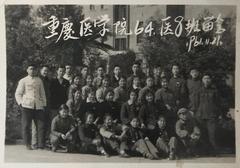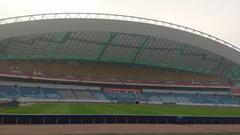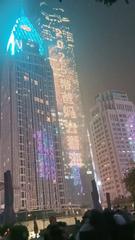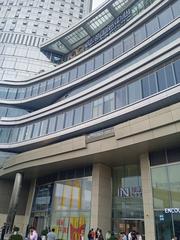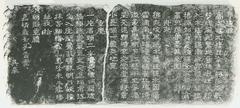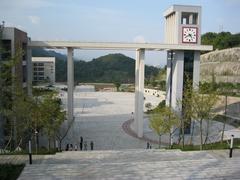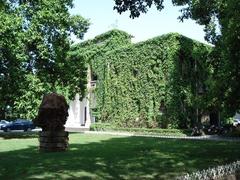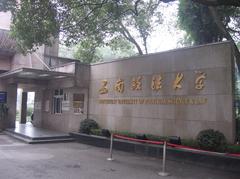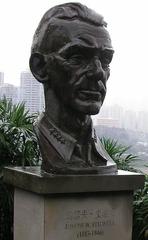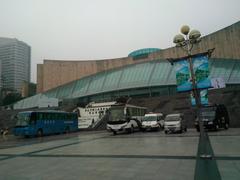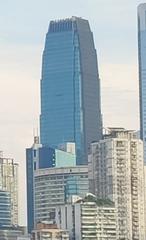Caiyuanba Bridge Visiting Hours, Tickets, and Chongqing Historical Sites Guide
Date: 04/07/2025
Introduction
Caiyuanba Bridge is a testament to Chongqing’s reputation as the “City of Bridges,” blending advanced engineering, urban connectivity, and visual elegance. Spanning the Yangtze River, this dual-deck tied-arch bridge not only connects vital city districts but also serves as a symbol of Chongqing’s innovative approach to infrastructure. Completed in 2007, Caiyuanba Bridge stands out for its integration of highway and light rail transit, pioneering design, and its role in the region’s economic and social development. This guide offers a comprehensive overview of the bridge’s history, architecture, visitor information, and its importance within Chongqing’s urban landscape (CQNews; TYLin; Chinawiki).
Contents
- Historical Context of Bridge Building in Chongqing
- Genesis and Design Innovations of Caiyuanba Bridge
- Construction Timeline and Engineering Features
- Visitor Information: Hours, Tickets, and Access
- Accessibility, Safety, and Facilities
- Best Photography Spots and Visual Media
- Related Attractions and Travel Connections
- Frequently Asked Questions (FAQ)
- Summary and Visitor Recommendations
- Sources and Further Reading
Historical Context of Bridge Building in Chongqing
Chongqing’s unique geography, defined by steep hills and the confluence of the Yangtze and Jialing Rivers, has fostered a rich tradition of bridge construction. Over the decades, the city has developed an array of suspension, cable-stayed, and beam bridges to overcome its challenging terrain and connect its rapidly growing districts. By the early 2000s, there remained a need for a large-span arch bridge to diversify the city’s bridge typology and enhance inter-district connectivity (CQNews).
Genesis and Design Innovations of Caiyuanba Bridge
Design Vision and Challenges
Caiyuanba Bridge was conceived to address several key challenges:
- Hydrological Complexity: The fluctuating water levels of the Yangtze required an innovative structural approach that minimized the number and size of river piers.
- Aesthetic Integration: Located in a central urban area, the bridge needed to harmonize with Chongqing’s skyline and natural scenery.
- Multi-modal Functionality: The bridge was designed to support both vehicular and light rail transit to maximize urban mobility.
Led by designer Liu Xiaohui and TYLin, the team opted for a slender tied-arch configuration, using concrete-filled steel tubes for the main span. Y-shaped piers and a dual-deck layout allowed for structural efficiency and minimal environmental impact (TYLin; Springer).
Construction Timeline and Engineering Features
Key Milestones
- 2003: Design phase initiated.
- 2004-2007: Construction, employing advanced cantilever and prefabrication techniques for efficiency and minimal river disruption.
- 2007: Bridge officially opened on October 29.
Structural Characteristics
- Main Span: 420 meters—one of the world’s longest tied-arch spans for combined highway and rail use.
- Length: 7 km (main bridge section 800 meters).
- Dual Decks: Upper deck for a six-lane expressway and pedestrian walkways; lower deck for Chongqing Rail Transit Line 3.
- Materials: Concrete-filled steel tubes, enhancing load-bearing capacity and seismic resilience.
- Lighting: Upgraded in 2015, with dynamic orange and yellow illumination for nighttime aesthetics (Chinawiki; Caminstech PDF).
Visitor Information: Hours, Tickets, and Access
Visiting Hours
- Open 24 hours: Pedestrian walkways and vehicular lanes are accessible at any time, though daylight and early evening are ideal for sightseeing and photography (Chinawiki).
Tickets
- No entrance fee: The bridge is public infrastructure; both pedestrian and vehicular access are free.
Getting There
- Metro: Take Chongqing Metro Line 3 to Tongyuanju or Intersection stations, both within walking distance (Chinawiki).
- Bus: Served by multiple city routes and the nearby long-distance bus terminal.
- Taxi/Ride-hailing: Available citywide, with drop-off points at both ends of the bridge.
- By Car: The upper deck is part of the urban expressway network, connecting major city arteries.
Accessibility, Safety, and Facilities
- Pedestrian Walkways: Clearly marked and separated from vehicular traffic, offering panoramic river and city views.
- Accessibility: Some ramps and elevators are available, particularly at metro stations, but steep approaches may limit access at certain points.
- Restrooms: Facilities can be found at nearby metro stations and commercial areas, not on the bridge itself.
- Food and shops: None on the bridge, but both ends are adjacent to vibrant districts with dining and retail options (MyTravelBuzzG).
Best Photography Spots and Visual Media
- Pedestrian Walkways: Ideal for capturing sunrise, sunset, and night views.
- Riverside Parks and Overpasses: Offer unobstructed vantage points for the illuminated bridge and cityscape.
- Sujiaba Overpass: Notable for its dramatic elevation and night lighting (People’s Daily).
Photography Tips: Visit during the dry season (Nov–May) for clearer weather, or at dusk for vibrant lighting. The rainy season adds atmospheric fog but can reduce visibility.
Virtual Resources: High-quality images and interactive maps are available on Chongqing tourism websites and travel blogs.
Related Attractions and Travel Connections
Nearby Attractions
- Jiefangbei Central Business District: Renowned for shopping and dining.
- Yangtze River Cableway: Offers aerial city and river views.
- Chaotianmen Dock: Departure point for Yangtze River cruises.
- Hongyadong: Traditional stilt house complex with restaurants and shops.
- Sujiaba Overpass: Architectural highlight with panoramic city views.
Public Transport Links
- Metro Line 3: Connects directly to key sights, including Chongqing Zoo and Liziba Station.
- Bus Network: The Caiyuanba Long Distance Bus Station facilitates intercity travel.
For more information, see our guides on Hongya Cave and Jiefangbei Pedestrian Street.
Frequently Asked Questions (FAQ)
Q1: Are tickets required to visit Caiyuanba Bridge?
No, access is free for both pedestrians and vehicles.
Q2: What are the bridge’s visiting hours?
It is open 24 hours a day.
Q3: Is the bridge accessible for people with disabilities?
Some ramps and elevators exist, but certain access points may have stairs or steep paths.
Q4: Are there guided tours or special events?
There are no official tours, but some city and river cruise tours include the bridge as a highlight.
Q5: What are the best times for photography?
Dusk and nighttime, when the bridge is illuminated, are most popular.
Summary and Visitor Recommendations
Caiyuanba Bridge is a cornerstone of Chongqing’s infrastructure and a striking example of modern bridge engineering. Its dual-deck, tied-arch design supports efficient urban transit and offers spectacular views, making it a must-visit for anyone interested in architecture, urban planning, or cityscapes. The bridge’s integration with public transport, proximity to major attractions, and 24-hour accessibility ensure a convenient and rewarding visit. For the best experience, plan your walk during clear weather or evening hours to witness the illuminated skyline. Explore nearby historical sites to complete your journey through Chongqing’s vibrant urban landscape (CQNews; TYLin; Chinawiki).
Sources and Further Reading
- CQNews: Caiyuanba Bridge Visiting Hours, Tickets, and Guide to Chongqing’s Iconic Historical Site
- TYLin: Visiting the Caiyuanba Yangtze River Bridge in Chongqing—History, Access, and Travel Tips
- World Transit Research: Caiyuanba Bridge Chongqing—Visiting Hours, Tickets, and Urban Significance
- Chinawiki: Caiyuanba Bridge Visiting Hours, Tickets, and Guide to Chongqing Historical Sites
- Springer: Caiyuanba Yangtze River Bridge Technical Review
- Caminstech PDF: Design of the Main Spans of the Chongqing Caiyuanba Bridge
- People’s Daily: Chongqing’s Bridges
- MyTravelBuzzG: Chongqing Itinerary and Travel Guide
- Let’s Travel to China: Things to Do in Chongqing
- Wanderlog: Best Bridges in Chongqing
- Trip.com: Chongqing Moments

